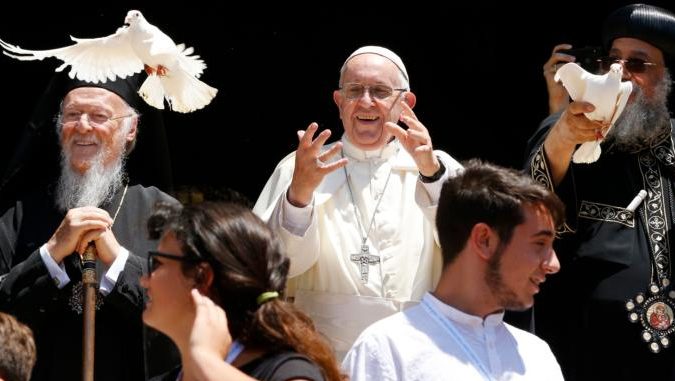movingstarvoices.org – The Pope, as the leader of the Roman Catholic Church and the head of state of Vatican City, holds a unique position in both religious and political spheres. His titles reflect his multifaceted roles and the historical, theological, and ecclesiastical significance of his office. This article explores the various titles of the Pope and their meanings.
The Official Titles of the Pope
The Pope’s official titles, as listed in the Annuario Pontificio, are:
- Bishop of Rome (Episcopus Romanus): This title underscores the Pope’s role as the spiritual leader of the Catholic Church, tracing back to the apostolic tradition of Saint Peter, who is believed to have been the first Bishop of Rome.
- Vicar of Jesus Christ (Vicarius Christi): This title signifies the Pope’s role as the earthly representative of Jesus Christ, acting as a unifying figure for the Church.
- Successor of the Prince of the Apostles (Successor Princeps Apostolorum): This title refers to the Pope’s position as the successor to Saint Peter, who is considered the Prince of the Apostles and the first Pope.
- Supreme Pontiff of the Universal Church (Summus Pontifex Ecclesiae Universalis): This title highlights the Pope’s role as the highest authority in the Catholic Church, overseeing the entire global community of believers.
- Primate of Italy (Primas Italiae): This title indicates the Pope’s primacy over the bishops of Italy, reflecting his leadership within the Italian church.
- Archbishop and Metropolitan of the Roman Province (Archepiscopus et Metropolitanus Provinciae Romanae): This title emphasizes the Pope’s role as the chief bishop of the Roman province, overseeing the archdiocese of Rome.
- Sovereign of the Vatican City State (Sovereanus Civitatis Vaticanae): This title refers to the Pope’s role as the head of state of Vatican City, a sovereign entity established by the Lateran Treaty in 1929.
- Servant of the Servants of God (Servus Servorum Dei): This title, adopted by Pope Gregory the Great in the 6th century, reflects the Pope’s humility and service to the faithful.
Theological and Historical Significance
Each of these titles carries deep theological and historical significance:
- Bishop of Rome: This title connects the Pope to the apostolic tradition, emphasizing the continuity of the Church’s leadership from the time of the apostles.
- Vicar of Jesus Christ: This title underscores the Pope’s role as the visible head of the Church, acting in the place of Christ on earth.
- Successor of the Prince of the Apostles: This title reinforces the idea that the Pope is the direct successor to Saint Peter, the first Pope, and thus holds the keys to the Kingdom of Heaven.
- Supreme Pontiff: This title highlights the Pope’s supreme authority within the Church, guiding and governing the faithful worldwide.
- Primate of Italy: This title reflects the Pope’s leadership over the Italian church, a role that has historical roots dating back to the early centuries of Christianity.
- Archbishop and Metropolitan: This title emphasizes the Pope’s role as the chief bishop of the Roman province, overseeing the archdiocese of Rome and its suffragan dioceses.
- Sovereign of the Vatican City State: This title signifies the Pope’s role as the head of state of Vatican City, a unique political entity within the heart of Rome.
- Servant of the Servants of God: This title reflects the Pope’s commitment to humility and service, a principle that guides his leadership and interactions with the faithful.
Conclusion
The Pope’s titles are not merely formal designations but carry profound theological, historical, and ecclesiastical significance. They reflect the multifaceted roles of the Pope as the spiritual leader of the Catholic Church, the head of state of Vatican City, and the successor to Saint Peter. These titles underscore the Pope’s unique position in both religious and political spheres, making him a central figure in the global Christian community.
